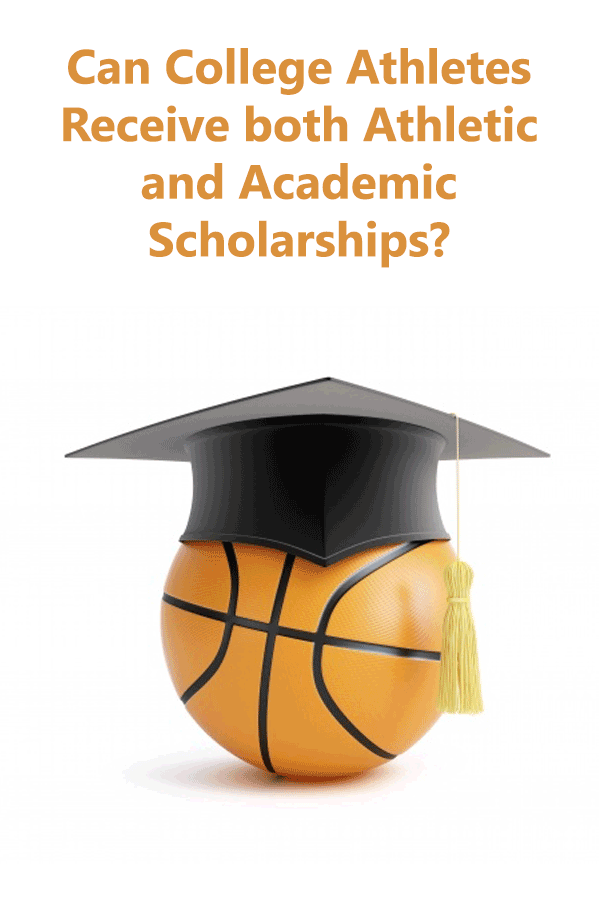 The first thing you need to know is that athletic and academic scholarships can’t be stacked at D3 schools because they do not offer any athletic scholarships. Until recently, it was theoretically possible to do so at D1 and D2 schools but only if athletes met certain academic requirements. Otherwise, it was assumed that that athletes were just receiving academic scholarships, or institutional need-based aid, simply because they were athletes. What happened in cases where the athletes didn’t meet the academic requirements, the award money was counted against the total number of scholarships allowed for the team. It was complicated.
The first thing you need to know is that athletic and academic scholarships can’t be stacked at D3 schools because they do not offer any athletic scholarships. Until recently, it was theoretically possible to do so at D1 and D2 schools but only if athletes met certain academic requirements. Otherwise, it was assumed that that athletes were just receiving academic scholarships, or institutional need-based aid, simply because they were athletes. What happened in cases where the athletes didn’t meet the academic requirements, the award money was counted against the total number of scholarships allowed for the team. It was complicated.
Free College Recruiting Checklist
Stacking athletic and academic scholarships is allowed
But not anymore. In July of 2020, the D1 Council “adopted legislation that would exempt from counting against team limits need-based financial aid given by the school that meets other specific criteria and other school-given, merit-based awards with no relationship to athletics ability. The rule is effective Aug. 1, 2020.” And coaches, players, the parents of players of equivalency sports everywhere rejoiced.
Why? Katie Lever at 2adays provides a useful example applying to baseball which is limited to 11.7 scholarships:
let’s say that a baseball player received a tuition scholarship for athletics that accounted for a 50% scholarship. If that player were to also receive a merit-based scholarship provided by their institution that filled the other 50%, under the NCAA’s current policy, that player would have cost the team a full scholarship, leaving his coach with 10.7 scholarships left over for the rest of his roster. Now, if that same player receives a 50% merit scholarship in addition to a 50% athletics scholarship, that coach is left with 11.2 scholarships to divide amongst his remaining roster.
The scholarship stacking rule change helps private colleges
This doesn’t actually increase the number of available scholarships. However, it just might increase the pool of athletes available to play at schools. Consider an extreme example, or maybe not as extreme as you might think, of a D1 baseball program at a college that costs $70,000 a year. Many universities with such high price tags generally provide generous need-base aid besides that awarded through federal and state financial aid programs. At such a school, these awards could easily exceed $50,000 for a high-need student. Even students with high family incomes are likely to qualify for need-based grants at such an institution.
Before the rule change, all of those institutional need-based awards would count towards the scholarship limit. Furthermore, academic scholarships at such schools, if they exist at all, tend to be very competitive. Therefore, players at such institutions aren’t likely to win such scholarships which would be exempted under the previous rules. It doesn’t take much imagination to see that teams at these colleges would probably have a larger percentage of full-pay students or students with massive loans than the general student population.
Public colleges can benefit from scholarship stacking as well
Even state institutions may benefit from the change. Anne Lepesant at SwimSwam has another baseball related example:
Baseball blogger Kendall Rogers uses the example of UT Austin, whose Texas Advance Commitment (TAC), introduced in 2018, guarantees gift aid to Texas residents whose families earn up to $100,000 per year, including a minimum of full tuition for families who earn up to $30,000 per year. Given that coaches in equivalency sports will now be able to offer those families athletic aid on top of the need-based aid guaranteed by TAC, Texas will be able to offer more generous packages to in-state student-athletes.
In other words, their pool of in-state student-athletes has expanded without any changes in the number of available athletic scholarships. Think about it. Before, such gift aid would have been counted against the team’s athletic scholarship count even if the athlete didn’t receive any athletic scholarship. Maybe that’s why few schools fully fund all of their athletic scholarships–they knew that they would have enough students receiving “approved” financial aid that would count as part of the athletic scholarship limit anyway. Who knows?
Athletic scholarship basics players need to know
In any case, student athletes need to understand the following about financial aid and scholarships under the current rules:
- Most sports are equivalency sports.
- Equivalency sports are less likely to provide full-ride scholarships.
- The NCAA sets the maximum limit of scholarships colleges can offer, few fully fund the maximum for all equivalency sports.
This means that unless athletes can afford to pay the full cost of tuition, they need to pay attention to their financial aid options. It can get complicated quickly since these will vary by college.
6 things athletes need to know about financial aid
Keep in mind the following when starting to deal with financial aid issues:
1. Find out what your Estimated Family Contribution (EFC) is as soon as possible. The EFC will soon be transitioning to the Student Aid Index (SAI) but will function the same. This will tell you the minimum amount families will be expected to pay for college.
2. Very few colleges, just around 80, are able to provide scholarships and grants to meet full demonstrated need as defined by the federal government. This is why families should consider their EFC the minimum they’ll have to pay.
3. Each college sets its own policy on how it treats outside scholarships. Some universities will allow outside scholarships to reduce student loan awards first. Others apply the scholarship to their grants first. For example, if a student wins a $1,000 scholarship, instead of reducing their student loan, colleges will reduce their need-based award by $1,000. Essentially, the school is treating the scholarship as extra income that reduces your need. It’s not clear how schools will handle athletic scholarships. Students will have to check with each school.
4. Treating scholarships as extra income for athletes is not necessarily a bad thing depending on the context. Athletes have little time for part-time jobs during the semester and even less flexibility in scheduling. Pursuing scholarships as a part-time job is one way athletes can earn extra money to help pay for school. Even if you spend 30 hours to win just one $500 scholarship, that’s still an average pay rate of $15 an hour.
5. Until you know otherwise, any potential earnings from Name, Image, and Likeness (NIL) should be considered as income that will reduce any need-based awards.
6. Merit scholarships, awards that are not based on need, will not be affected by income. Many colleges offer very generous merit scholarships that will now be exempted from counting against the athletic scholarship limits. However, keep in mind that these scholarships often come with their own rules about stacking with regard to other institutional scholarships. Yes, another thing that you’ll need to check on at each school.



7 thoughts on “Is Stacking Athletic and Academic Scholarships Allowed?”